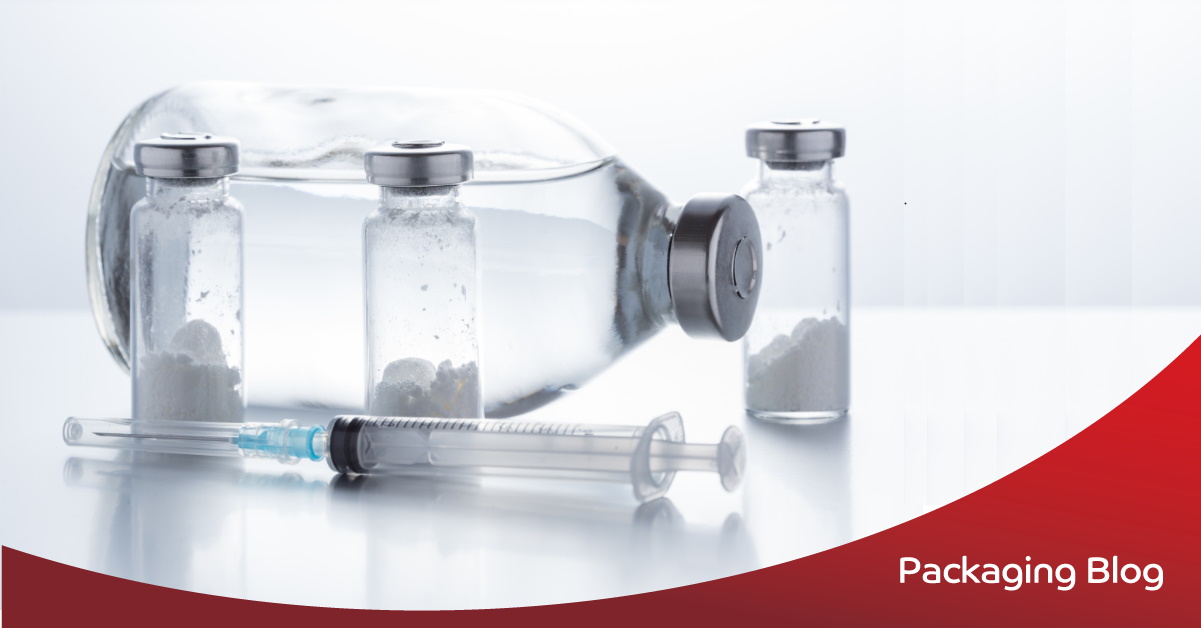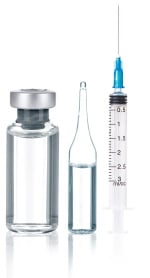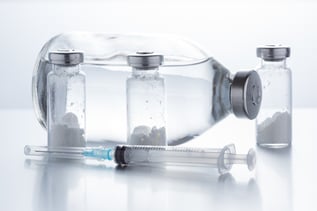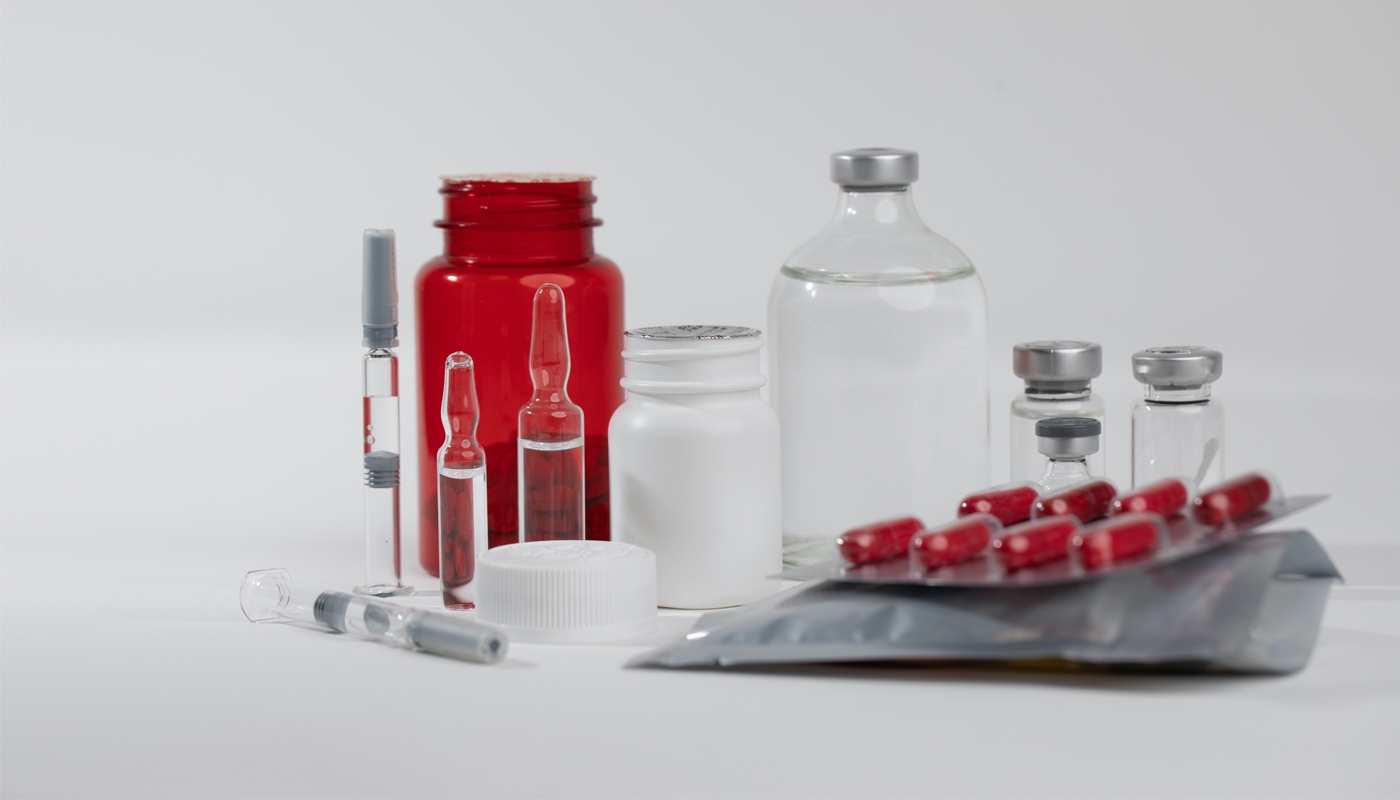
Container Closure Integrity Testing (CCIT): safety in numbers
In the last 20 years an entire industry has grown around detecting pinholes that measure less than 1000th of a millimetre in diameter in pharmaceutical and medical device containers.
The holes might be tiny, but, in the eyes of regulators such as the US Food and Drug Administration (FDA), they represent a critical defect that can compromise the sterility and stability of a product.
It isn’t just pinholes that present a risk; a crack in a glass ampoule, a weak seal on a cartridge and an ill-fitting stopper or cap on a vial all introduce a threat of contamination.
All of these defects can be picked up by Container Closure Integrity Testing (CCIT) – an assay that evaluates the adequacy of container closure systems to maintain a sterile barrier against potential contaminants.
 Sepha, a long time expert in designing leak testing equipment for pharmaceutical blister packs, pouches, sachets and bottles, also offer CCIT test methods for rigid containers such as glass and plastic vials, ampoules, pre-filled syringes, cartridges and bottles. Whilst the testing principles are the same, blister packaged drugs are ingested orally, whereas many drugs packaged in rigid containers are parenteral, making CCIT a critical operation.
Sepha, a long time expert in designing leak testing equipment for pharmaceutical blister packs, pouches, sachets and bottles, also offer CCIT test methods for rigid containers such as glass and plastic vials, ampoules, pre-filled syringes, cartridges and bottles. Whilst the testing principles are the same, blister packaged drugs are ingested orally, whereas many drugs packaged in rigid containers are parenteral, making CCIT a critical operation.
Recent years has seen a major shift towards ‘new’ deterministic testing methods. Underpinned by the revision of United States Pharmacopeia (USP) General Chapter 1207, which called for more quantitative, validated CCIT methods, this trend continues to gain momentum.
This post charts the evolution of CCIT, from test methods and equipment developments to the ever-changing regulatory landscape.
Why test?
Clearly it is important to prevent content leakage and ingress of moisture, air and contaminants for all packaged pharmaceutical products. However, for parenteral products, CI defects might cause a change in the active pharmaceutical ingredient (API) owing to a loss of vacuum, oxidation or hydrolysis, or bacterial contamination. This can lead to a loss in efficacy, the development of unexpected side-effects and serious repercussions for patient health.
Issues with leaking containers and closures are a rare occurrence on well-maintained pharmaceutical lines. Most problems occur as a result of incorrect set-up of equipment. For example, inaccurate sealing parameters or inadequate torque might lead to issues. With liquid and powdered products, leaks may occur when the seal area is contaminated with product. Defective incoming packaging materials or imperfections on container finish are another possible cause of failure.
Even though the risk of contamination is low, the stakes are high. At best, inadequate CCIT results in consumer complaints and/or costly product recall. Both are damaging to a brand’s reputation and consumer confidence, as demonstrated by some of the more high profile cases. At worst, patient safety is the ultimate price of inadequate testing. Which is why CCIT has been steadily moving up the pharmaceutical manufacturing agenda for some years.
Regulatory pressure is the main driver behind improvements in industry practices in CCIT. Any drug manufacturing facility, within the US and overseas, is under the surveillance of the US FDA, and the agency may decide at any time that a site warrants inspection. If this inspection exposes violations of good manufacturing practices, a warning letter (form 483) will be issued, or, for very serious breaches, the facility will be ordered to shut down. In 2019, 81 warning letters were issued to finished drug manufacturers worldwide, a number of which cited breaches of CCIT requirements[1].
A brief history of CCIT
FDA guidance for safeguarding the sterility of drug products through packaging integrity testing has been in existence in unauthorised form since 1998. However, it wasn’t until 2008, with the publication of the agency’s guidance “Container and Closure System Integrity Testing in Lieu of Sterility Testing as a Component of the Stability Protocol for Sterile Products” that CCIT was officially recognised as the preferred strategy for confirming the sterility of medical products.
This guidance reiterated the importance of CCI testing and the limitations of sterility tests, namely, the chance of false positive readings due to microbial contaminants introduced during testing and the destructive nature of these tests, which eliminate the opportunity to reexamine samples in the event of either positive or negative findings.
In the same year, the European Commission published volume 4 of "The rules governing medicinal products in the European Union”, which contains guidance for the interpretation of the principles and guidelines of good manufacturing practices for medicinal products for human and veterinary use. Annex 1 specifically relates to the manufacture of sterile medicinal products, and stipulates that: “Containers should be closed by appropriately validated methods. Containers closed by fusion, e.g. glass or plastic ampoules should be subject to 100% integrity testing. Samples of other containers should be checked for integrity according to appropriate procedures.”
What the FDA regulations and the European guidelines don’t describe in detail is how CCI testing should be performed.
Then, in 2016, the United States Pharmacopeia (USP), the government body in charge of standards and guidelines for the pharmaceutical industry, provided clarification on this subject. USP 1207 “Package Integrity Evaluation – Sterile Products” is regarded as the most thorough guidance to date on CCI concepts for sterile and critical products such as vials and syringes.
2017 saw the European Commission publish a revised draft of Annex 1. The draft text, which includes new requirements for CCIT, is currently undergoing a second round of consultation.
CCIT Testing methods
Standards body ASTM has produced documents that detail most CCIT methods, to assist manufacturers with the development of compliant testing strategies. Whilst ASTM standards are not legally mandated, they are recognised as meeting regulatory requirements. They also give auditors reassurance that testing is being carried out in line with a standardised / approved method.
There are multiple ASTM standards for CCIT methods for pharmaceutical and medical containers. Examples include F2338-09 for vacuum decay testing and F2391-05 for helium trace analysis testing.  Not every test method has a corresponding ASTM standard. Methods that are widely used but that do not have an associated standard include High Voltage Leak Detection (HVLD), vision based lidding deflection, pressure decay testing and laser-based headspace analysis. This is because new standards are introduced when an organisation or an industry ‘champions’ a particular technique. In CCIT they are usually initiated by a provider of testing/inspection technology or equipment. The company then works with ASTM to develop the standard. That is not to say this test has to be performed by the same system that was used in the development of the standard or that testing equipment produced by other companies cannot be used to satisfy the standard (this a common misconception).
Not every test method has a corresponding ASTM standard. Methods that are widely used but that do not have an associated standard include High Voltage Leak Detection (HVLD), vision based lidding deflection, pressure decay testing and laser-based headspace analysis. This is because new standards are introduced when an organisation or an industry ‘champions’ a particular technique. In CCIT they are usually initiated by a provider of testing/inspection technology or equipment. The company then works with ASTM to develop the standard. That is not to say this test has to be performed by the same system that was used in the development of the standard or that testing equipment produced by other companies cannot be used to satisfy the standard (this a common misconception).
Probabilistic vs deterministic methods
The last few years have seen a gradual transition to deterministic methods – regardless of whether or not they have a standard associated with them – as they are generally recognised as being more accurate and reliable.
Most probabilistic tests are destructive, which means the samples cannot be re-used, generating significant product loss, waste and mess. Probabilistic methods are also qualitative, producing results that are dependent on technique, sample preparation and operator variability, making them time consuming and unreliable. Because most deterministic tests can be non-destructive, they may be performed repeatedly over time to provide a quantitative measure of a sample’s leak rate, as they do not render the often costly product inside the container unusable. They are also less subject to human error as they use validated test equipment to obtain an objective measurement of leakage.
The publication of the new USP guidance demonstrates a clear preference for deterministic, non-destructive methods. The most commonly deployed deterministic tests are vacuum decay, pressure decay, laser-based headspace analysis, HVLD and tracer gas analysis. The post below provides a detailed comparison of these methods: https://blog.sepha.com/usp-1207-opening-the-ccit-toolbox
With the Falsified Medicine Directive (FMD) now in effect, the requirement to implement serialisation has provided further impetus to adopt deterministic methods. Pharmaceutical companies investing in track and trace systems want to be able to identify whether an individual pack within a batch has been leak tested, so that they have this data available in the event of a recall.
Nevertheless, there are still some scenarios in which a probabilistic test makes sense. It is usually a case of weighing up risk against cost. Take, for example, a low value, low potency product like paracetamol, if a blue dye test carried out on 1/100 products can prove that the container is leak-tight, it does not make sense to invest in a more costly, sophisticated testing method. However, a high potency, injectable product that has undergone sterilisation is a completely different matter. The cost of a CCI failure would be too high to risk, therefore it would be necessary to test every single container via a deterministic method such as HVLD or vacuum decay. Whichever method a manufacturer chooses, it will need to be validated for the specific drug product. More information on Vacuum Decay Testing can be found in the post below: https://blog.sepha.com/vacuum-decay-testing
Evaluating CCIT equipment options
Whilst deterministic tests can either be carried out off-line or in-line, probabilistic tests are (mostly) destructive and therefore not a practical option for in-line testing. For products that require 100% leak testing, in-line equipment is the only option.  The current EU Annex 1 guidelines stipulate 100% integrity testing for containers closed by fusion, such as glass or plastic ampoules and for any parenteral products. However, industry best practices are constantly evolving and there is a discernable move towards larger scale sampling for other pharmaceutical products too. The ongoing draft revision of Annex 1 recommends that a “statistically valid sampling plan” is implemented for other types of container and emphasises that a visual inspection alone is not considered an acceptable integrity test method. If the draft is finalised in this form, CCI test methods that enable the testing of larger amounts of samples will need to be implemented.
The current EU Annex 1 guidelines stipulate 100% integrity testing for containers closed by fusion, such as glass or plastic ampoules and for any parenteral products. However, industry best practices are constantly evolving and there is a discernable move towards larger scale sampling for other pharmaceutical products too. The ongoing draft revision of Annex 1 recommends that a “statistically valid sampling plan” is implemented for other types of container and emphasises that a visual inspection alone is not considered an acceptable integrity test method. If the draft is finalised in this form, CCI test methods that enable the testing of larger amounts of samples will need to be implemented.
In-line inspection
In-line inspection technology has advanced apace in recent years and now non-invasive vacuum decay, pressure decay, headspace analysis and HVLD testing can all be performed in-line on vials and ampoules without impacting on line speeds, which can be in excess of 600 containers per minute. This is thanks to the development of rotary systems with multiple heads/testing chambers, and improvements in container handling – a major equipment design challenge in on-line applications. Whilst most inline leak testers are dedicated to one test technique, combi systems that can carry out both headspace gas analysis and vacuum or pressure decay are available.
The tooling/automation element of in-line systems makes them an expensive CCI option – typical machine cost have known to be in excess of €1mn – but the result is a fast, reliable and repeatable method of full batch testing.
Off-line inspection
Pharmaceutical manufacturers are increasingly using smaller lab-scale leak testing systems to validate in-line inspection systems – in other words, to make sure that in-line systems are testing and inspecting as they should. Off-line leak testers are also deployed for R&D purposes and where 100% testing is not required. In some cases, where manufacturers are producing small batches of targeted, high value drugs, it may even be possible to conduct 100% testing off-line. Off-line systems tend to be dedicated to a specific testing method, although multi-functional machines capable of performing several different tests through the addition of attachments are now available.
Off-line leak testers cost a fraction of the price of in-line systems to validate and are capable of detecting smaller leaks than in-line systems. Most off-line units will require a separate vacuum generator, although lab-scale machines incorporating a vacuum system are now available. New generation systems are generally database connected/enabled and have better trending and data analysis tools.
CFR Part 11 compliance
Any leak tester should be compliant with CFR Part 11 – the FDA’s guidelines for storing and protecting electronic records. To this end it should incorporate features such as electronic signatures and audit trail capabilities. Using a leak tester that supports compliance with 21 CFR Part 11 not only makes the instrument qualification and operational qualification (IQ/OQ) processes more efficient, it also facilitates the scale-up of new products.
Conclusion
Packaging integrity testing is now an essential part of the packaging process, driven by USP 1207 guidelines, cGMP and ASTM standards. Besides satisfying ever more stringent regulatory demands, a robust leak detection system can assure packaging integrity, greatly reducing the likelihood of recalls. While traditional, destructive methods are still valid in some applications, the trend towards deterministic, non-invasive methods is gaining pace, underpinned by the growing need to demonstrate traceability and advancements in both in-line and off-line testing equipment.
[1]https://www.thefdagroup.com/blog/2019-fda-warning-letter-inspection-observation-trends
Sepha Solutions
Founded in 1980, Sepha has established a global reputation for innovation and development of specialised, high-quality equipment for use in the manufacture of pharmaceutical blister packs, parenterals, medical devices and healthcare products.
We have developed two innovative CCIT machines that offer non-destructive & deterministic leak detection utilising vacuum decay or pressure decay.
- The Multi-Q is a multi-functional system that offers the flexibility to test different container types by use of interchangeable tooling and test methods, including vacuum and pressure decay.
- The Multi-Q HD has been developed for parenteral applications that have a lower Maximum Allowable Leakage Rate (MALL) and require a higher level of sensitivity. Advanced sensor technology enables ultra-sensitive detection of micron defects as low as 1µm.
Other interesting articles:
